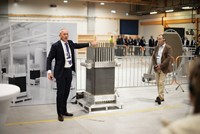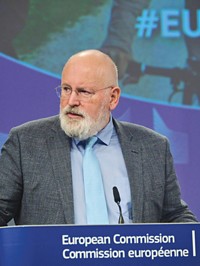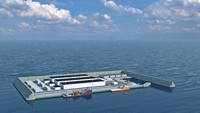Advertisement
Grab your lab coat. Let's get started
Welcome!
Welcome!
Create an account below to get 6 C&EN articles per month, receive newsletters and more - all free.
It seems this is your first time logging in online. Please enter the following information to continue.
As an ACS member you automatically get access to this site. All we need is few more details to create your reading experience.
Not you? Sign in with a different account.
Not you? Sign in with a different account.
ERROR 1
ERROR 1
ERROR 2
ERROR 2
ERROR 2
ERROR 2
ERROR 2
Password and Confirm password must match.
If you have an ACS member number, please enter it here so we can link this account to your membership. (optional)
ERROR 2
ACS values your privacy. By submitting your information, you are gaining access to C&EN and subscribing to our weekly newsletter. We use the information you provide to make your reading experience better, and we will never sell your data to third party members.
Hydrogen Power
Europe seeks to lead on green hydrogen
EU targets $67 billion investment within 10 years
by Alex Scott
October 15, 2019
| A version of this story appeared in
Volume 97, Issue 41
The European Commission (EC) has unveiled a new initiative, in partnership with the industry association Hydrogen Europe, to promote production of green hydrogen across the European Union. The aim is to generate hydrogen via renewable-energy-powered water electrolysis for use as a carbon-free fuel and chemical raw material.
Big plans
Silver Frog is one of the largest of the proposed projects
▸ H2 production: 800,000 metric tons (t) per year
▸ CO2 saving: 8 million t per year
▸ Cost: $12 billion–20 billion
▸ Energy input: 15GW from solar and wind
▸ Technology: Water electrolysis
▸ H2 end use: Refineries, chemical plants
▸ Location: Several EU countries, including Italy
Source: Meyer Burger, Hydrogenics Europe
The initiative will feature at least eight substantial green hydrogen projects to be implemented in the next 5–10 years. They will require a combined investment of more than $67 billion, according to Hydrogen Europe. A substantial part of the investment would go toward increasing solar and wind energy capacity to provide the needed electricity. Some of the money is set to come from the European Commission and national governments, with the rest from companies.
“Europeans really can lead on this,” Frans Timmermans, the EC vice president-elect for Europe’s Green Deal—a plan to turn Europe into a zero greenhouse gas emissions region—recently told members of the European Parliament.
Today, according to the consulting firm IHS Markit, producing hydrogen via electrolysis is considerably more expensive than producing the fuel from natural gas—even if by-product CO2 is captured and stored. But falling costs for electrolyzers could eventually close that gap, the firm says.
That’s what the EC is counting on. Collectively, it claims, the eight projects could generate in excess of 3 million metric tons (t) of hydrogen and save 35 million t of CO2 annually. A workshop is scheduled for next month in Brussels to match industrial firms with suitable partners along the hydrogen production supply chain.
One of the largest projects, dubbed Silver Frog, aims to deliver 800,000 t per year of green hydrogen to industrial users, including fertilizer producers.
“Hydrogen technologies are ready today for deployment. No need to wait another 10 years to reap the benefits for climate action,” Christian Weinberger, the EC’s senior adviser on advanced industrial technologies and hydrogen coordinator, said in a statement.





Join the conversation
Contact the reporter
Submit a Letter to the Editor for publication
Engage with us on Twitter